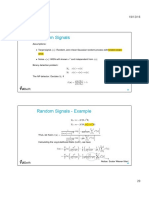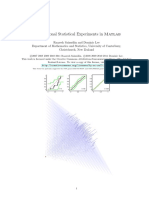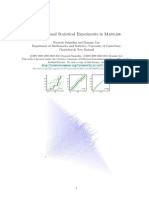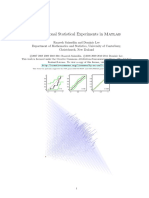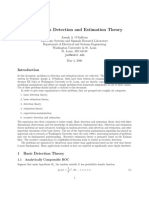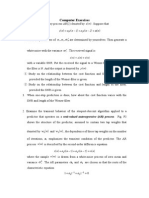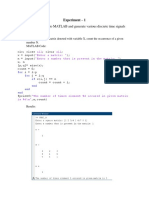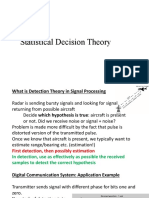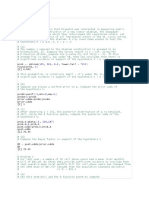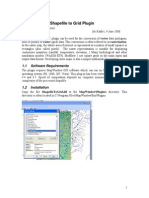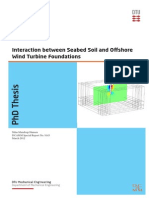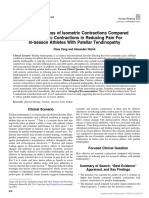0% found this document useful (0 votes)
15 views5 pagesEstimation and Detection Theory Lab Manual v2
The lab manual introduces postgraduate students to Estimation and Detection Theory through hands-on experiments, including Maximum Likelihood Estimation, Bayesian Estimation, Binary Hypothesis Testing, and Matched Filter Detection. Each experiment outlines objectives, theoretical backgrounds, procedures, and expected outcomes, utilizing software like Python and MATLAB. The manual emphasizes practical applications and visualizations of statistical concepts in signal processing and hypothesis testing.
Uploaded by
chetandongarsaneCopyright
© © All Rights Reserved
We take content rights seriously. If you suspect this is your content, claim it here.
Available Formats
Download as DOCX, PDF, TXT or read online on Scribd
0% found this document useful (0 votes)
15 views5 pagesEstimation and Detection Theory Lab Manual v2
The lab manual introduces postgraduate students to Estimation and Detection Theory through hands-on experiments, including Maximum Likelihood Estimation, Bayesian Estimation, Binary Hypothesis Testing, and Matched Filter Detection. Each experiment outlines objectives, theoretical backgrounds, procedures, and expected outcomes, utilizing software like Python and MATLAB. The manual emphasizes practical applications and visualizations of statistical concepts in signal processing and hypothesis testing.
Uploaded by
chetandongarsaneCopyright
© © All Rights Reserved
We take content rights seriously. If you suspect this is your content, claim it here.
Available Formats
Download as DOCX, PDF, TXT or read online on Scribd
/ 5


